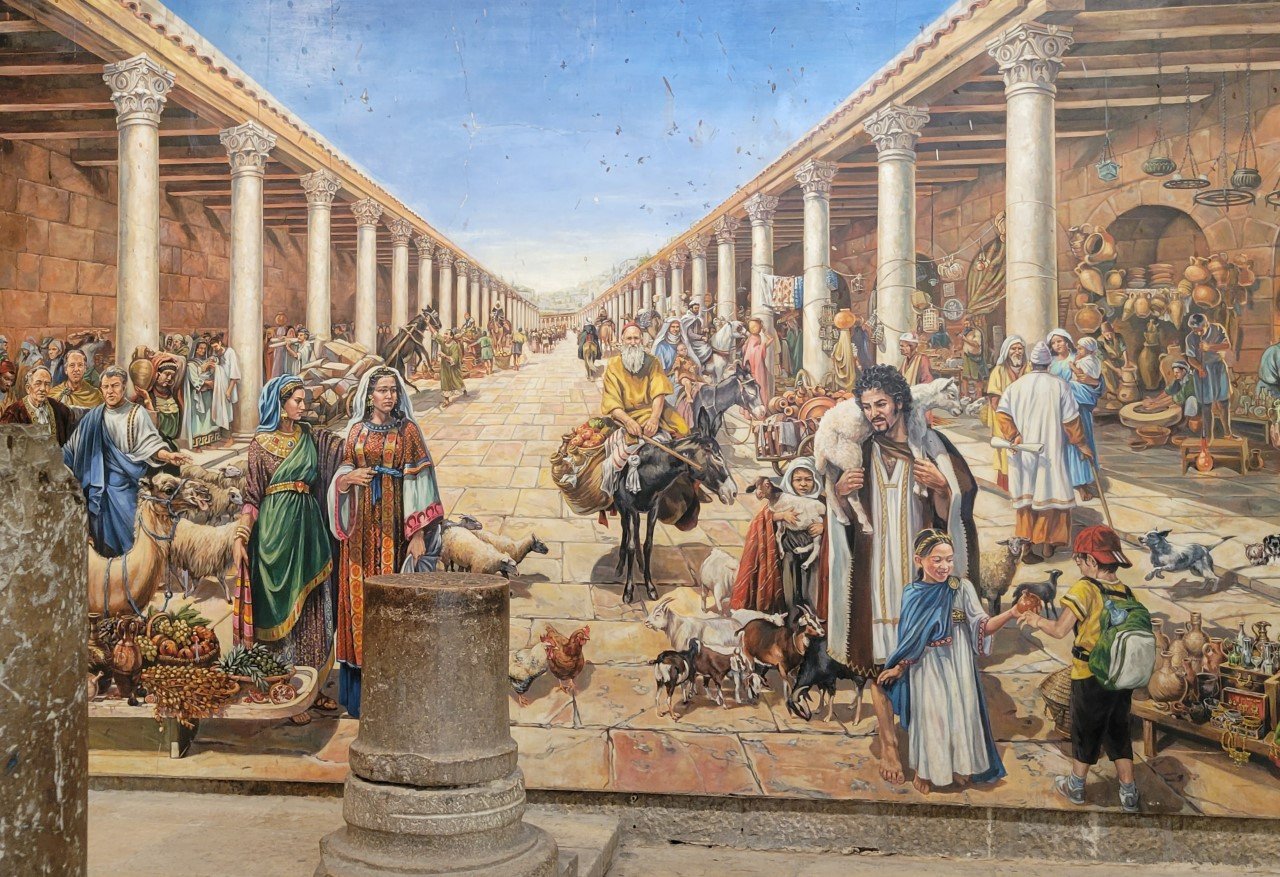Though Manasseh’s descendants formed only half the tribe of Joseph (the other half being Ephraim) and its population was surpassed by Judah, Issachar, Zebulun, Dan, and Asher (Numbers 26) at the time of their entry in Canaan, Manasseh occupied one of the largest allotments among the tribes of Israel, rivaling even the royal tribe of Judah. Half of Manasseh’s allotted territory was located technically outside the Promised Land of Canaan in the region commonly referred to as the Transjordan (“across the Jordan”), which was seized from King Og as the Israelites approached Canaan from the southeast and prepared to enter the land (Numbers 32:33; Deuteronomy 3:13; Joshua 13; see “Israel Defeats Og and Sihon” map). The other half of its territory (often referred to as West Manasseh) lay in the central region of the Promised Land, and the tribe of Manasseh, sometimes referred to by the name of Machir, Manasseh’s son, was involved in several of the key events in the early life of Israel. They participated in victory of Deborah and Barak over Sisera (Judges 5:14; see “Deborah and Barak Defeat Sisera” map) as well as the victory of Gideon (who was from Manasseh) over the Midianites (Judges 7:23; see “Gideon Defeats the Midianites” map). After Gideon died, his son Abimelech briefly made himself king over Shechem and also attacked the town of Thebez in the territory of Manasseh (Judges 9).
Manassites were among those who joined David before the battle at Mount Gilboa and also among those who came to make him king at Hebron (1 Chronicles 12; see “The Battle at Mount Gilboa” map and “David and Ish-bosheth” map). Many Manassites were also among those who humbled themselves and accepted Hezekiah’s invitation to attend the Passover in Jerusalem (2 Chronicles 30:11).
West Manasseh’s boundaries eventually stretched from the Mediterranean Sea to the Jordan River, and that is how they are drawn on virtually all maps of the tribe’s territory. But this author is convinced that a careful reading of Joshua 16-17 (particularly Joshua 17:7-12) indicates, technically speaking, that Manasseh’s initial allotment included only the land of Hepher, that is, the land to the west of Tappuah, Shechem, and En-gannim and to the south of Asher (see “Poster Map of the Tribe of Zebulun and Its Surroundings circa 1200 B.B.” map and its discussion regarding southern Asher), as shown on this map (see also 1 Kings 4:10). But the tribe of Joseph (that is, Manasseh and Ephraim) complained to Joshua that their allotted territory in Canaan was not large enough for their growing populations (Joshua 17:14-18). So Joshua responded: “If you are a numerous people, go up to the forest, and clear ground there for yourselves in the land of the Perizzites and the Rephaim” (Joshua 17:15). Then it appears that the tribe of Joseph complained further that even this additional hill country would not be enough, yet they were not confident that they could take land from the Canaanites in the Jezreel Valley (Joshua 17:16). But Joshua assured them, “Since you are so large and strong, you will be given more than one portion. The forests of the hill country will be yours as well. Clear as much of the land as you wish, and take possession of its farthest corners. And you will drive out the Canaanites from the valleys, too, even though they are strong and have iron chariots” (Joshua 17:17-18, NLT). This additional allotment–the forested hill country of the Perizzites and the Rephaim–was likely the mountainous region just north of Shechem and surrounding the towns of Tirzah, Thebez, and Bezek. This is supported by Jacob’s comment in Genesis 34:30 that Simeon and Levi had had made him “odious to the inhabitants of the land, the Canaanites and the Perizzites” when they slaughtered the men of Shechem for assaulting their sister. Judges 1:4-5 also references a battle fought against the Canaanites and the Perizzites at Bezek. Prior to the Israelites’ entry into Canaan, Perizzites apparently lived in the hill country near Bethel and Ai as well (Genesis 13:7). The Rephaim, while predominantly associated with the lands across the Jordan River (Genesis 14:5; Deuteronomy 2:11-20; 3:11-13), apparently also lived in Canaan, because the Israelites wiped out many Anakim, who were descendants of the Rephaim, as they were conquering Judah (Deuteronomy 2:11; Joshua 11:21-22; 14:12-15). It should also be noted that Ephraim was included in this promise of an additional lot as well (Joshua 17:17), and the stories of Gideon and Jephthah indicate that by their time Ephraim, not Manasseh, was progressively gaining control over the lower Jordan Valley as far north as Zaphon (Judges 7:23-24; 12:1). Manasseh also began to occupy territory belonging to the surrounding Israelite tribes, including the towns and surrounding villages of Beth-shan, Ibleam, Dor, Endor, Taanach, and Megiddo, though they never fully drove out the Canaanites living there (Joshua 17:11-12; Judges 1:27-28). As a result, the territory occupied by Manasseh and Ephraim by the completion of the book of Joshua and Judges is notably larger than the land originally allotted to them.
Joshua also records that Manasseh’s tribal allotment were further divided among individual clans of Manasseh, including the families of the daughters of Zelophehad (Joshua 17:1-6). During the Israelites’ wandering in the wilderness, Moses granted Zelophehad’s daughters, whose father had no sons, the right to inherit land, though this was not the normal practice in Israel (Numbers 27). The discovery of the Samaria Ostraca in the palace of Ahab in 1910 has enabled scholars to deduce the likely area in which several of these clans settled within Manasseh’s territory, including Noah, Shemida, Abiezer, Asriel, Shechem, Helek, Hoglah, and Tirzah. This author also suspects that location of the clan of Milcah may be preserved in the name of the ruins at Khirbat al Milkh and the nearby stream of Wadi el Maleh. The Arabic names mean “salty” in Arabic, but they may actually be a corruption of an original Milcah (“queen”).

This map is designed to be printed at 11 in. x 17 in., but it may scale acceptably at larger or smaller sizes as well.











 English (US) ·
English (US) ·